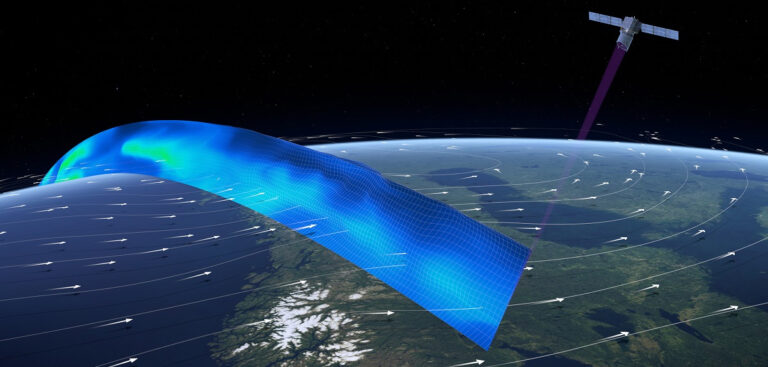The European Space Agency’s Aeolus satellite has started providing the European Centre for Medium-Range Weather Forecasts (ECMWF) with wind data after tests showed significant improvements in weather forecasts.
Aeolus was launched in August 2018 to test the usefulness of direct wind profile observations from space for numerical weather prediction.
It works by measuring the backscatter of laser light from air molecules, known as Rayleigh-clear data, and from clouds and aerosols, known as Mie-cloudy data.
Tests by ECMWF demonstrate that the impact of the observations on forecasts in the southern hemisphere and the tropics is comparable to some other major components of the earth observing system.
Other numerical weather prediction centers have also found big improvements in weather forecasts when using Aeolus data in test experiments.
ECMWF scientists have collaborated with engineers and scientists from DLR, DoRIT, ESA, KNMI and Meteo-France to understand Aeolus’s data biases.
To determine weather forecast conditions, earth system observations were combined with short-range forecast information in data assimilation.
The assimilated data vastly improved short-range forecasts, bringing them much closer to other wind, temperature and humidity observations than when Aeolus data was not assimilated.
ECMWF’s main aim was to produce high-quality medium-range forecasts, and improvements were mainly found in the tropics and southern hemisphere, which were less well covered than the northern hemisphere.
Mike Rennie of ECMWF said, “We have found the overall impact of Aeolus data on forecasts in the southern hemisphere and the tropics to be comparable to that of data from some other major components of the global observing system.”
Assimilating data in the northern hemisphere was less even, with ECMWF’s head of the actively sensed observation group, Lars Isaksen saying it was already well observed.
“But we suspect that the complex pattern of Aeolus data biases in the northern hemisphere might also play a role,” he added.
“We have been able to identify and correct some of these biases successfully, but there is scope for further improvements, due to a recent breakthrough.”



